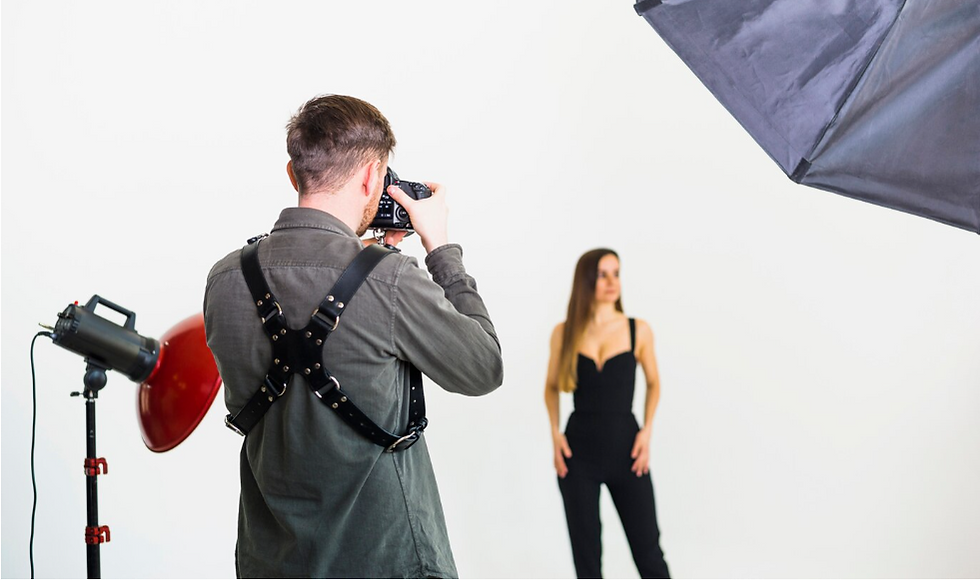How to Take Beautiful Pictures Using Aesthetic Photography
- Mamun

- Feb 3, 2024
- 4 min read
Aesthetic Photography! In a world filled with fleeting moments, capturing the essence of beauty through the lens of a camera has become a form of art that transcends time. Aesthetic photography goes beyond the technicalities of composition and lighting; it delves into the emotional realm, seeking to freeze moments that evoke a sense of wonder and enchantment. In this article, we will explore the art of aesthetic photography, unraveling the secrets to taking beautiful pictures that resonate with emotions.

Understanding the Essence of Aesthetic Photography
Aesthetic photography is more than just a visual experience; it is about conveying emotions through images. Unlike traditional photography, which often focuses on precise technicalities, aesthetic photography places a strong emphasis on the mood, atmosphere, and feelings evoked by the photograph. It explores the emotional depth within the frame, creating a visual poetry that speaks to the heart.
Embracing Natural Light
One of the key elements in aesthetic photography is the mastery of natural light. The soft, golden glow of the early morning or late afternoon sun can transform an ordinary scene into a mesmerizing masterpiece. To capture this ethereal light, plan your shoots during the golden hours, when the sun is low in the sky, casting long, warm shadows. Embrace the interplay of light and shadows, allowing them to sculpt your subject and create a captivating visual narrative.
Selecting the Right Subject
In aesthetic photography, the subject plays a pivotal role in conveying emotions. Look for subjects that resonate with you on a personal level or evoke a strong emotional response. It could be the weathered face of an elderly person, the innocence of a child's laughter, or the quiet beauty of nature. By connecting with your subject on an emotional level, you can infuse your photographs with genuine feelings that resonate with viewers.

Creating a Compelling Composition
Composition is the language of photography, and in the realm of aesthetics, it has become a powerful tool for storytelling. Experiment with different composition techniques to add depth and interest to your images. The rule of thirds, leading lines, and framing are fundamental principles that can guide you in creating a visually appealing composition. However, don't be afraid to break the rules; sometimes, the most captivating images emerge from unconventional compositions.
Mastering Depth of Field
Aesthetic photography often relies on a shallow depth of field to isolate the subject and create a dreamlike atmosphere. Use a wide aperture (low f-stop) to blur the background, drawing attention to the principal subject and emphasizing the scene's emotional impact. Experiment with different focal lengths to find the perfect balance between subject and background, allowing your audience to immerse themselves in the emotions conveyed within the frame.
Infusing Mood through Colors
Colors have the power to evoke emotions and set the tone of a photograph. Pay attention to the color palette of your scenes, considering how different hues can influence the mood of your images. Warm tones like oranges and yellows create a cozy, inviting atmosphere, while cool tones like blues and greens evoke a sense of calmness and serenity. Experiment with color grading during post-processing to enhance the emotional resonance of your photographs.

Capturing Authentic Moments
Aesthetic photography thrives on authenticity, capturing unscripted moments that reflect the genuine emotions of your subjects. Be patient and observant, allowing the scene to unfold naturally. Candid shots often carry a raw, emotional quality that posed images may lack. Whether it's a shared glance between two people or a spontaneous burst of laughter, these authentic moments have the power to transport viewers into the heart of the emotions you aim to convey.
Embracing Minimalism with Aesthetic Photography
In the pursuit of aesthetic photography, less is often more. Embrace the beauty of simplicity by incorporating elements of minimalism into your compositions. A clean, uncluttered frame allows the viewer to focus on the emotional core of the image. Experiment with negative space, using it to accentuate the subject and create a sense of tranquility within the photograph.
Tapping into Texture and Detail
Textures add a tactile quality to your photographs, inviting viewers to connect with the image on a sensory level. Explore different textures in your surroundings – the rough bark of a tree, the soft petals of a flower, or the smooth surface of water. Pay attention to details, capturing the nuances that contribute to the overall emotional impact of the photograph. Macro photography can be a powerful tool to explore the intricate beauty of small details.

Post-Processing as a Creative Tool
Post-processing is the digital darkroom, where the final emotional resonance of your image is shaped. Use editing tools to enhance the mood, refine colors, and emphasize the emotions captured in your photographs. However, exercise restraint; the goal is to improve, not overpower. Let the essence of the scene guide your editing decisions, ensuring that the final image remains true to the emotions you aimed to convey.
You can get service from an- image cutout service.
Aesthetic photography is a journey into the soul of visual storytelling. It transcends the boundaries of technical expertise, inviting photographers to explore the emotional depth within every frame. As you embark on your journey of capturing beauty through the lens, remember that the essence of aesthetic photography lies in connecting with the emotions that surround you. Whether it's the soft glow of dawn, the laughter of loved ones, or the quiet beauty of a solitary moment, let your photographs tell a story that resonates with the heart and soul. In the world of aesthetic photography, the most beautiful pictures are not just seen; they are felt.






Comments